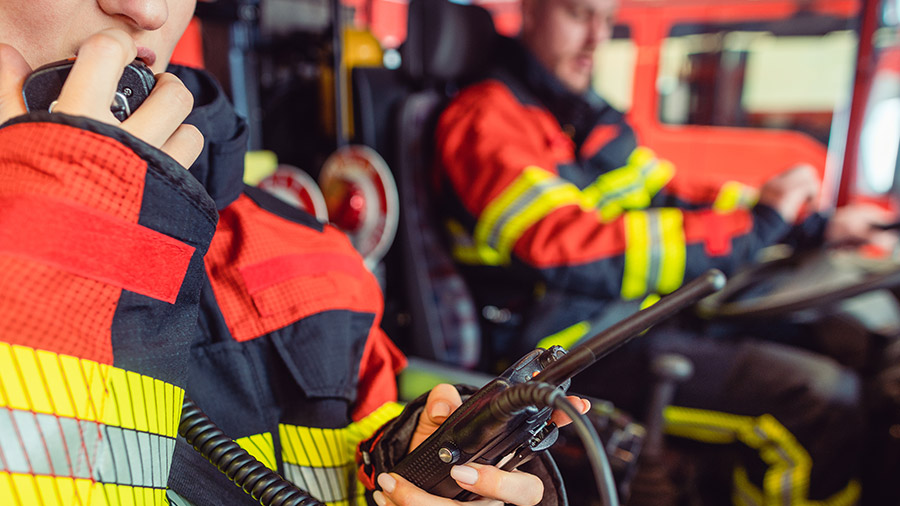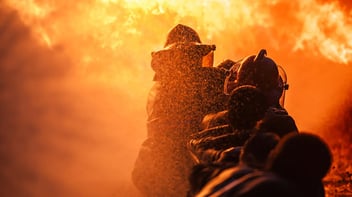In the summer of 2022, Florida updated its fire code to ensure better communication standards to support public safety. Temporarily exempted from the modified regulation were high-rise buildings, which must comply with the law by Jan 1, 2025 or jeopardize your certificate of occupancy.
One of the most significant elements of the law, Florida Fire Prevention Code 633.202(18), was the stipulation that new and existing buildings of a certain size must have adequate public safety radio signal strength.
Understanding which buildings are impacted and to what extent is essential for building owners and managers to avoid potential penalties and safeguard the well-being of occupants and emergency responders.
What is Florida Fire Prevention Code 633.202(18)?
Signed into law by Gov. Ron DeSantis in 2022, Florida Fire Prevention Code 633.202(18) mandates minimum radio signal strength for fire department communications in all new and existing buildings.
It outlines requirements for in-building public safety communications coverage and establishes compliance deadlines for different types of buildings. While it aims to enhance public safety, it also imposes responsibilities on building owners and managers to ensure their properties meet the specified standards.
The law requires an in-depth assessment of the adequacy of public safety radio signals within a building, with assistance from qualified in-building wireless systems integrators and the installation of a two-way radio communication enhancement system, if needed.
The statute also requires regular assessments of new or existing buildings’ interior radio coverage and signal strength at least once every five years to maintain your certificate of occupancy.
New constructions must meet various standards, including emergency backup power and monitoring systems for uninterrupted service to secure their initial certificate of occupancy.
To ensure full compliance, building operators should consult with their authority having jurisdiction (AHJ) to learn how this change is being enforced.
If deficiencies in coverage are identified and enforcement is in place, you’ll have to promptly develop a comprehensive plan, including design and permit acquisition, to meet deadlines.
Building owners are required to obtain written permission from the Frequency License Holder for each broadcasted frequency, with support available from System Integrators to facilitate this process.
What Buildings Will Be Affected?
This code applies to a wide range of buildings, but primarily targets new and existing Florida high-rises (both commercial and residential) exceeding 75 feet in height. There are certain exemptions, however, such as buildings constructed using wood framing and those with specific dwelling unit counts and discharge configurations.
For existing high-rise buildings, deadlines are set for full adherence by Jan. 1, 2025, however, permit applications were required by Jan. 1, 2024, so building owners and managers must act promptly to ensure compliance and avoid penalties or risks to their certificates of occupancy.
Related: Why Every New Construction Building Should Have a Public Service DAS
Who Does This Law Impact?
This change carries significant implications for building owners, managers, and tenants alike. It’s designed to enhance the safety of occupants and emergency responders by ensuring robust communication systems within buildings, especially during critical situations like fires or other emergencies.
Failure to meet the mandated standards can result in risks to life and public safety, as well as potential legal liabilities, and disruptions to business operations. New constructions must meet various standards, including emergency backup power and monitoring systems for uninterrupted service.
Fire safety enforcement authorities can issue citations, impose fines, or shut down non-compliant buildings. Depending on the severity of infractions and local statutes, building owners could potentially face criminal charges as well.
Find a Trusted Distributed Antenna Systems (DAS) Provider Dedicated to Compliance & Safety
With the deadline looming and variations in how different jurisdictions will enforce the law, now is the time to act and ensure that your building is up to code and your certificates of occupancy aren't at risk.
Distributed Antenna Systems (DAS) provide robust coverage for emergency radios and cellular networks to maintain compliance with fire code mandates and emphasize coverage in critical areas like control rooms and stairwells.
DAS solutions bridge coverage gaps, improving emergency responder communication and occupant safety. In emergencies, inadequate communication can heighten risks, and high-rise structures can often disrupt radio frequencies, impeding first responders.
Combining national reach with local expertise, AirTower Networks specializes in designing, installing, and maintaining Public Safety DAS tailored to meet the specific needs of your building.
Navigating the complexities of regulatory compliance can be daunting, but partnering with experienced professionals like Airtower Networks can streamline the process and ensure peace of mind.
From consultation and design to ongoing maintenance and even filing the necessary permits on your behalf, AirTower Networks is your trusted partner in ensuring the safety and security of your properties. Connect with us today to get started updating your high-rise buildings!
Subscribe to the Airtower Networks Blog
Get emailed articles, guides, and updates.




